Samyang 12mm F20 for Sony E Mount - Reviews

I had mixed feelings well-nigh some of Samyang's (likewise sold under the Rokinon brand) early total frame lenses, but I really loved their compact APS-C primes whose design linguistic communication was in many ways a precursor to their full frame "Tiny Series". I love the tiny serial, and the newest lens in the series (the Samyang AF 24mm F1.eight which I reviewed hither) was the best even so. But fortunately Samyang has not abandoned APS-C shooters (who are perennially overlooked), and has released an updated autofocus version of 1 of my favorite lenses of the before series – a 12mm F2 (which I reviewed here). That lens was transmission focus only, but I loved the compact, handsome build, and in many means it had really excellent optics. I liked it well plenty in my review that I bought one for my Canon EOS M cameras and merely sold it when I moved from Catechism to Sony on the APS-C mirrorless front end. The new Samyang AF 12mm F2 is an autofocus version of this formula for Sony Eastward-mount (APS-C mirrorless), and also comes with a new build and fresh pattern linguistic communication that is slightly different than annihilation I've seen from Samyang before. Information technology's great to see Samyang requite some fresh dearest to APS-C, and the 12mm F2 gives an approximately 18mm full frame angle of view (99.1°). The AF12 (as we'll call it for brevity) can be mounted on a full frame Sony camera since the E mount is for both full frame and APS-C, but, as we can see, at that place is a significant amount of mechanical vignetting if you effort to employ the lens on a full frame camera.
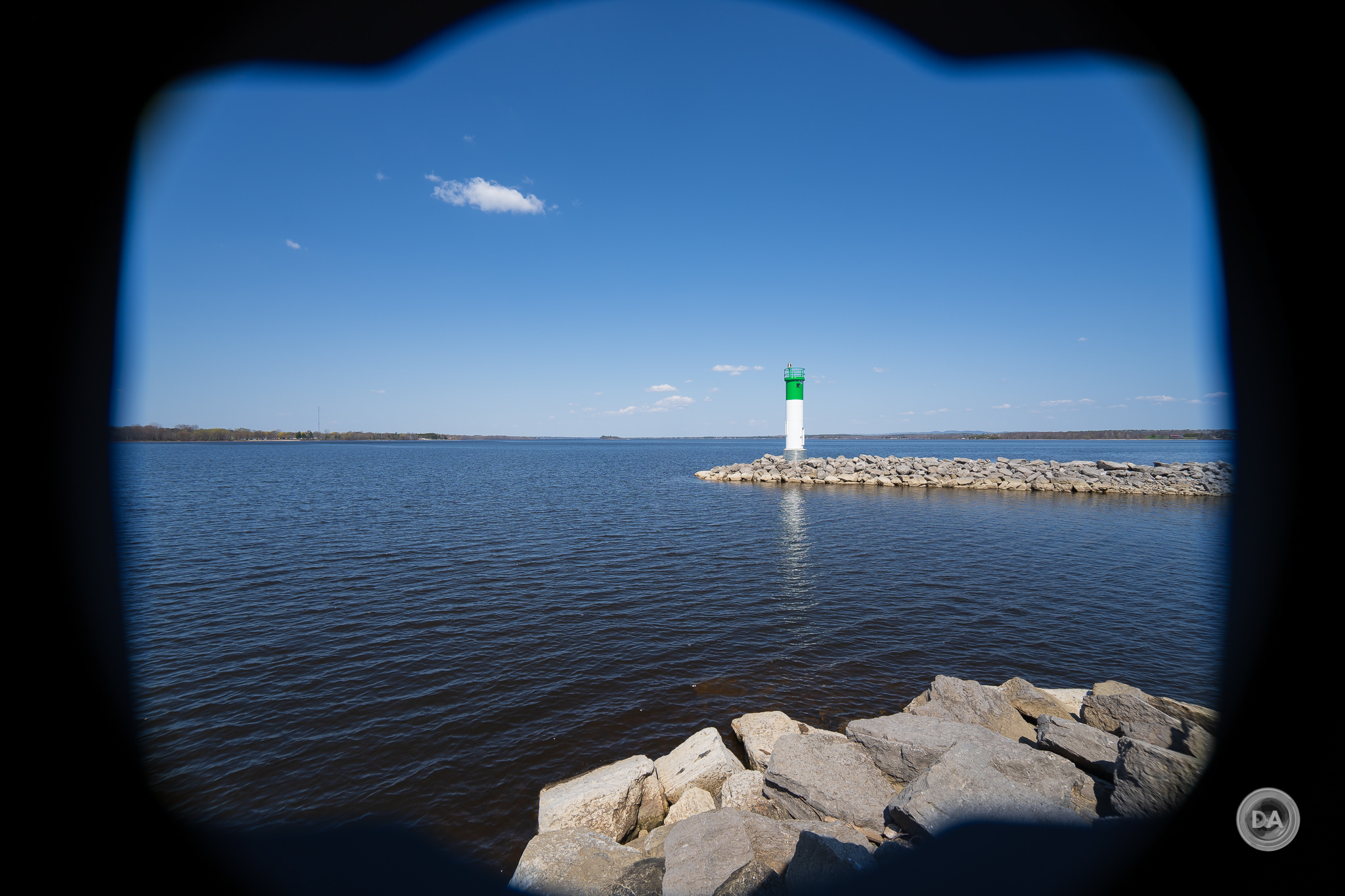
The AF12 but isn't designed to cover the full frame image circle. In this case the APS-C ingather isn't far off. If I manually crop the total frame image (on the right, below), I end upward with roughly 25MP of resolution vs the natural 21MP of the Alpha I's APS-C crop.
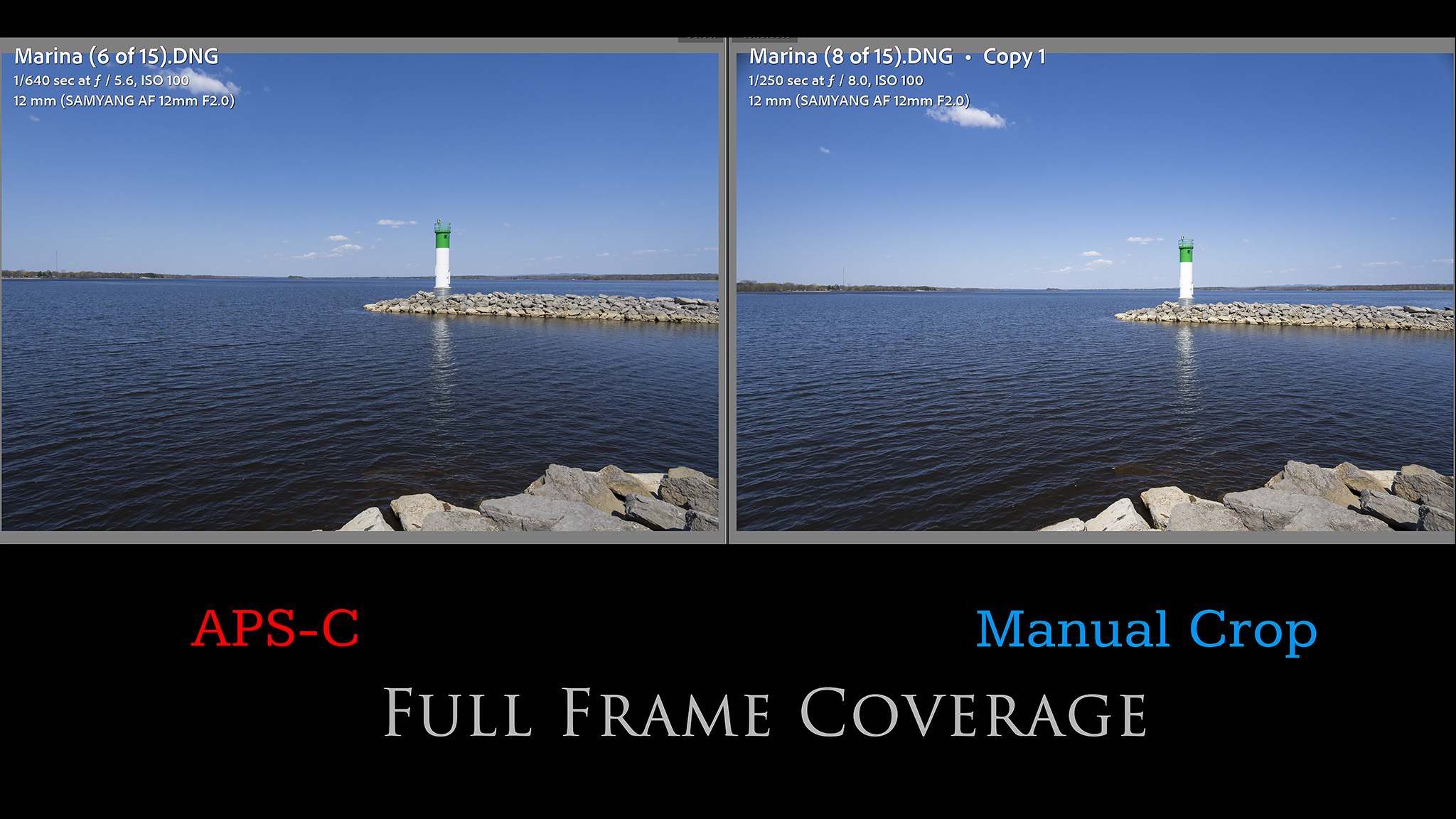
If y'all didn't happen to ain a total frame wide angle lens, that might work in a pinch, though I certainly wouldn't buy it specifically for that. The Samyang AF 18mm F2.8 is the total frame equivalent in the "Tiny Series". But I've always enjoyed this focal length on its native APS-C, though, where it delivers nicely dynamic images with a groovy bending of view:
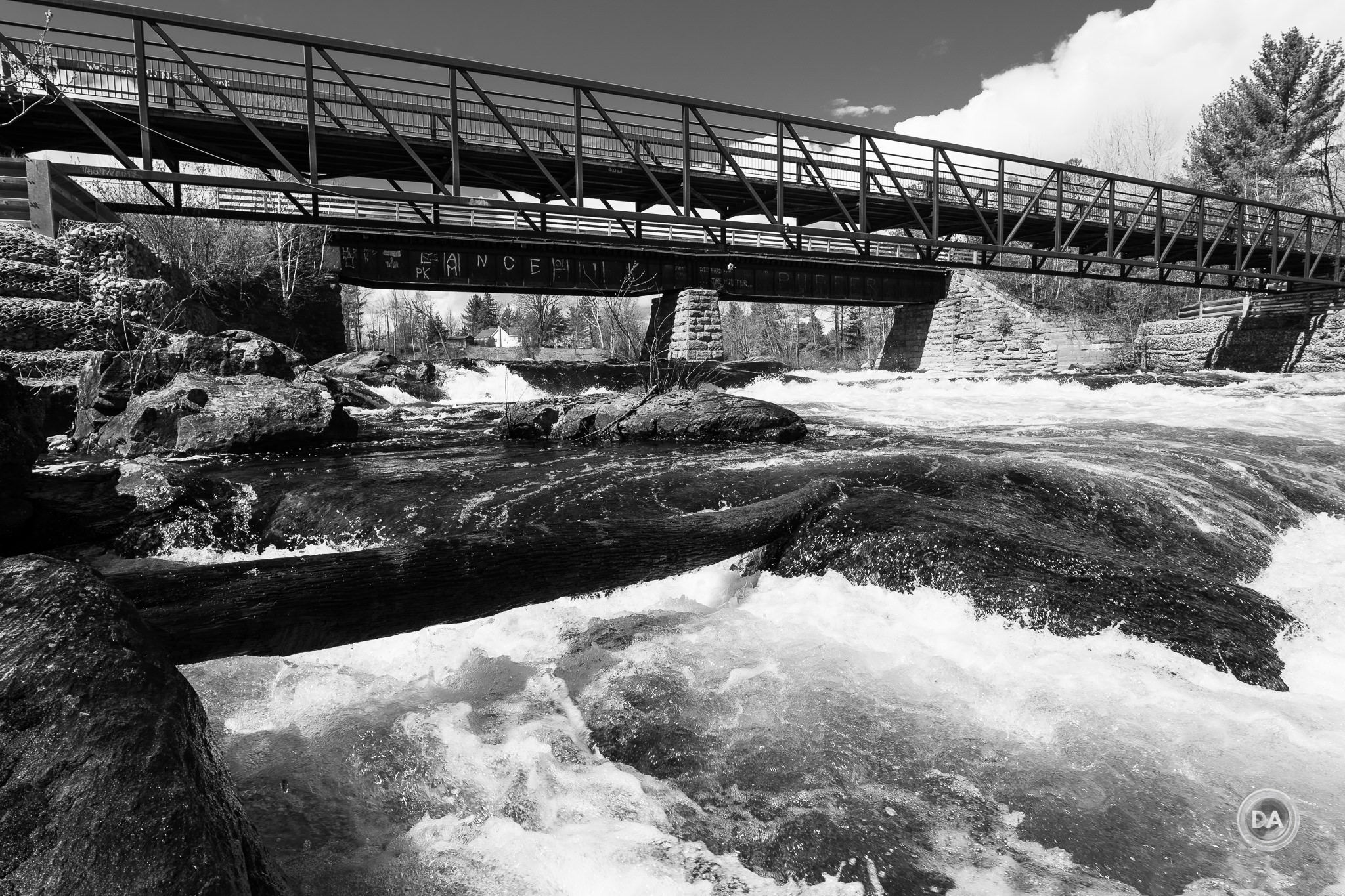
Samyang states that this becomes the widest autofocusing lens on Sony APS-C, though that'southward not entirely true. The Sony x-18mm F4 OSS lens does be, and information technology is an autofocusing lens, though with a much smaller maximum aperture that is a total two stops slower. The Samyang AF12 is the widest autofocusing prime lens on Sony APS-C at the moment, though, and is certainly a better choice for depression lite situations or astro than the F4 zoom (which also costs more than twice as much!). That makes it a very welcome lens, and, there are a number of positive upgrades hither that hateful that things are looking up for this lens.
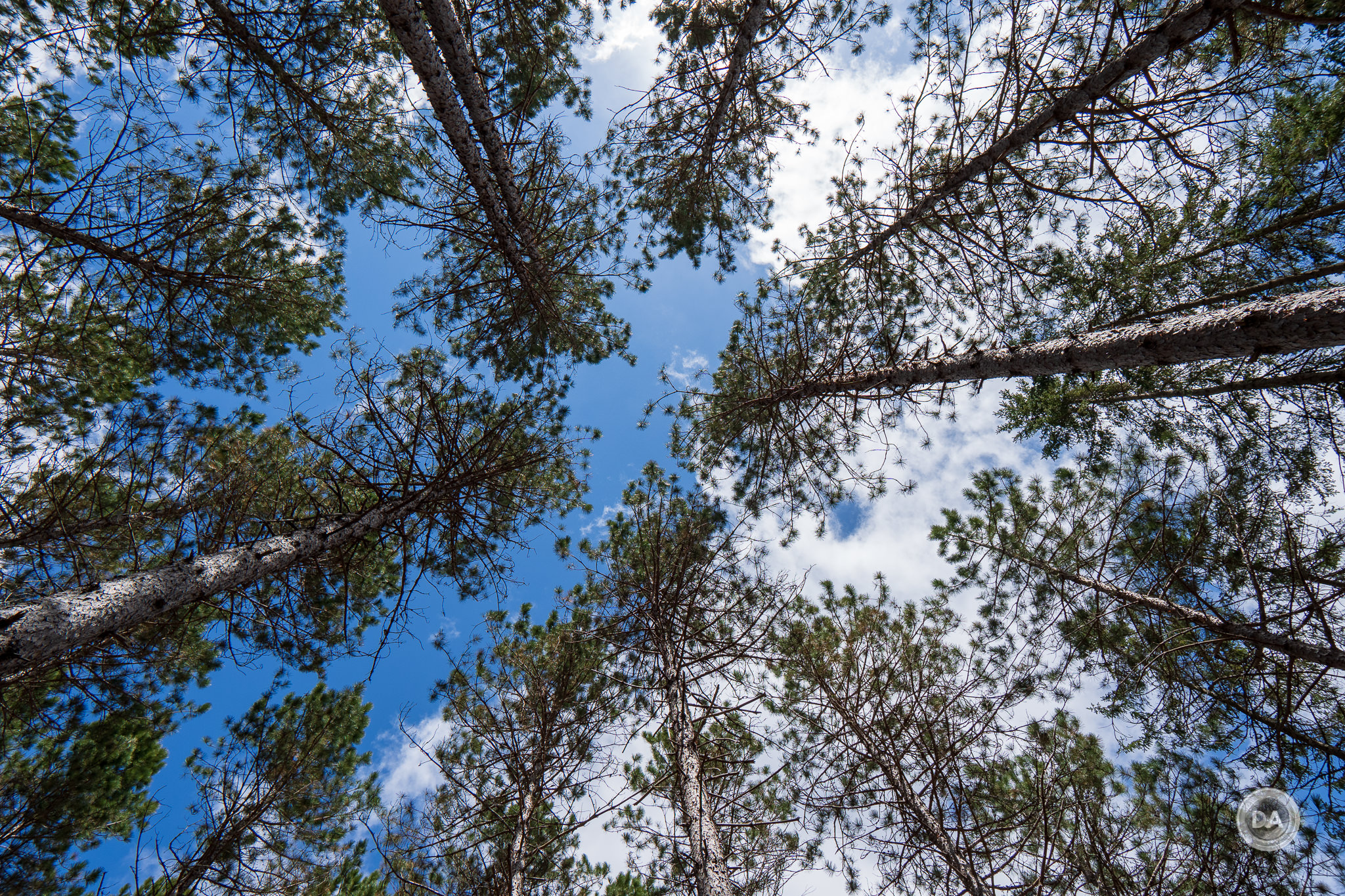
The AF12 has been updated with a some of Samyang'south recent design updates, including linear STM autofocus, weather sealing, and a few design element updates. What isn't new, however, is the optical formula. This was always a potent lens optically, though it is a little less stiff relative to the competition these days. Still, at $399 USD, it's hard to point to a stronger broad bending option that goes this wide. Y'all tin can get all the details past either watching the definitive (long format) or standard video reviews below…or just keep reading.
Follow Me @ Patreon | My Newsletter | Instagram | Facebook | DA Merchandise | Flickr | 500px
Thanks to Samyang for sending me a test copy of the lens. As always, this is a completely independent review.
Samyang AF12 Build, Handling, and Features
I love the compact design of the first Samyang manual focus 12mm F2 lens, though I did see a bit of sample variation. My loaner copy for review was mechanically expert, with good manual focus action. I decided to past one, and my first copy had a stiff focus band. I had the Canadian distributor of Rokinon (Samyang lenses are sold under both brands) supplant information technology with a second re-create, and it was similarly good to the review copy. Information technology was non unusual to see a bit of inconsistency with early Samyang lenses, though I've seen a lot of maturity in that regard from them. I've reviewed about x Samyang lenses in the past few years, and they have all been functionally sound. The new AF12 has similar dimensions to the earlier manual focus lens, but they aren't identical. The two lenses are about the same length (right over 59mm), but the new lens is slightly narrower at only 70mm. The original lens had a slimmer lens butt that flared out considerably near the front element. The new lens has a more consistent diameter and thus a very dissimilar profile (see the tertiary photo).
They've debuted a new look here, with a slightly more matte stop and a new diamond pattern texture to the manual focus ring. Samyang's signature red ring (which they, ahem, "appropriated" from Canon) is a trivial more discreet in the electric current design, and more often than not disappears if the lens hood is attached. They call it the "hidden red band".
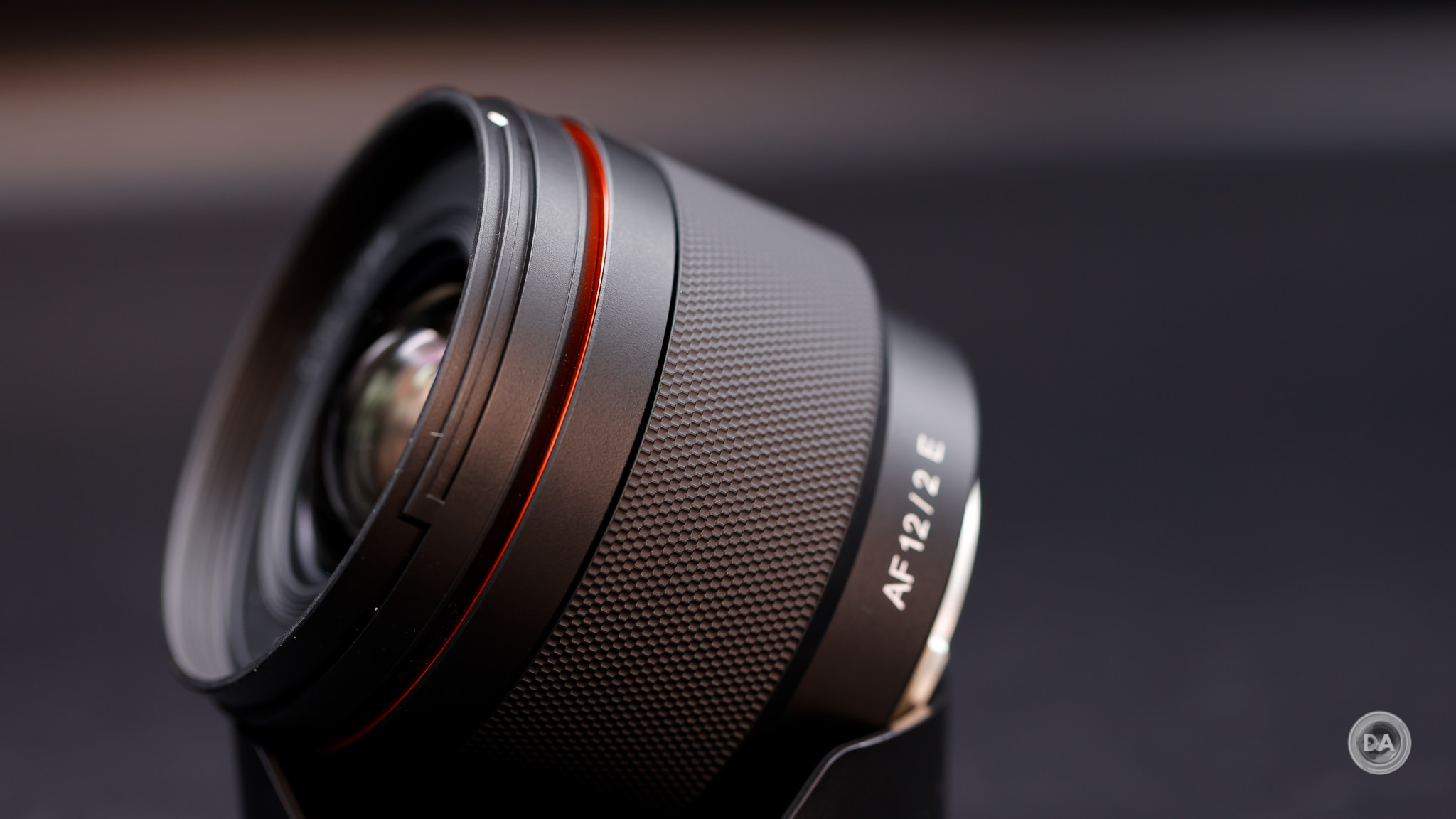
I was surprised to find that the new lens was really lighter than the transmission focus version. It is but 213g (7.5 oz), which is over 30g lighter than the before MF lens (245g). The Sony ten-18mm is also very lightweight (225), though the Sigma 16mm F1.4 with its larger maximum aperture weighs in at a heavier 405g. Here's a look at the basic spec comparisons across these four choices.
Though the body is mostly engineered plastics, the lens doesn't feel cheap in the hand. The branding is a piddling more discrete than typical on this lens, with lens designation on the top near the lens mount (etched, not printed). The merely Samyang branding is on the right side of the lens, and it pretty much disappears backside the lens grip. At that place is a scrap more than barding on the front fascia of the lens, but it reserves itself to the lens designation, minimum focus distance, and filter thread size (62mm rather than the 67mm on the manual focus version). I would personally adopt the 67mm filter threads, however, as 62mm is far less common.
Everything is based around a metal lens mountain, which does accept a weather condition sealing gasket. Samyang seems to indicate that in that location is at least one other seal point inside, too. Samyang touts something near the rear element and that it helps seal the lens too.
There are no external switches. You'll have to select manual focus from inside the camera. The focus action feels skillful. I similar the texture of the focus ring, and damping is nice. Focus seems by and large linear, from what I tin can determine, so you lot should get some repeatability.
The AF12 does include both a nice example and a lens hood, which is bully to meet in a reasonably priced APS-C lens. The only negative on that front is that the current physical blueprint doesn't allow the lens hood to be fully reversed for storage. In that location is a slight bevel narrower towards the forepart of the lens, which is the place where the lens bayonets on, meaning that the lens hood is slightly narrower than the bore of the focus ring. I don't find it to be a huge affair for the elementary reason that the lens and hood are short enough that the overall length of the lens is still very compact with the hood attached. I just leave it in identify all the time.
There are seven rounded aperture blades in the new design, which is a definite upgrade over the vi blades in the older lens. I knocked the boring looking sunstars in the older lens, but the new lens has much meliorate looking sunburst effects, which always add together that extra bit of goodness to images:
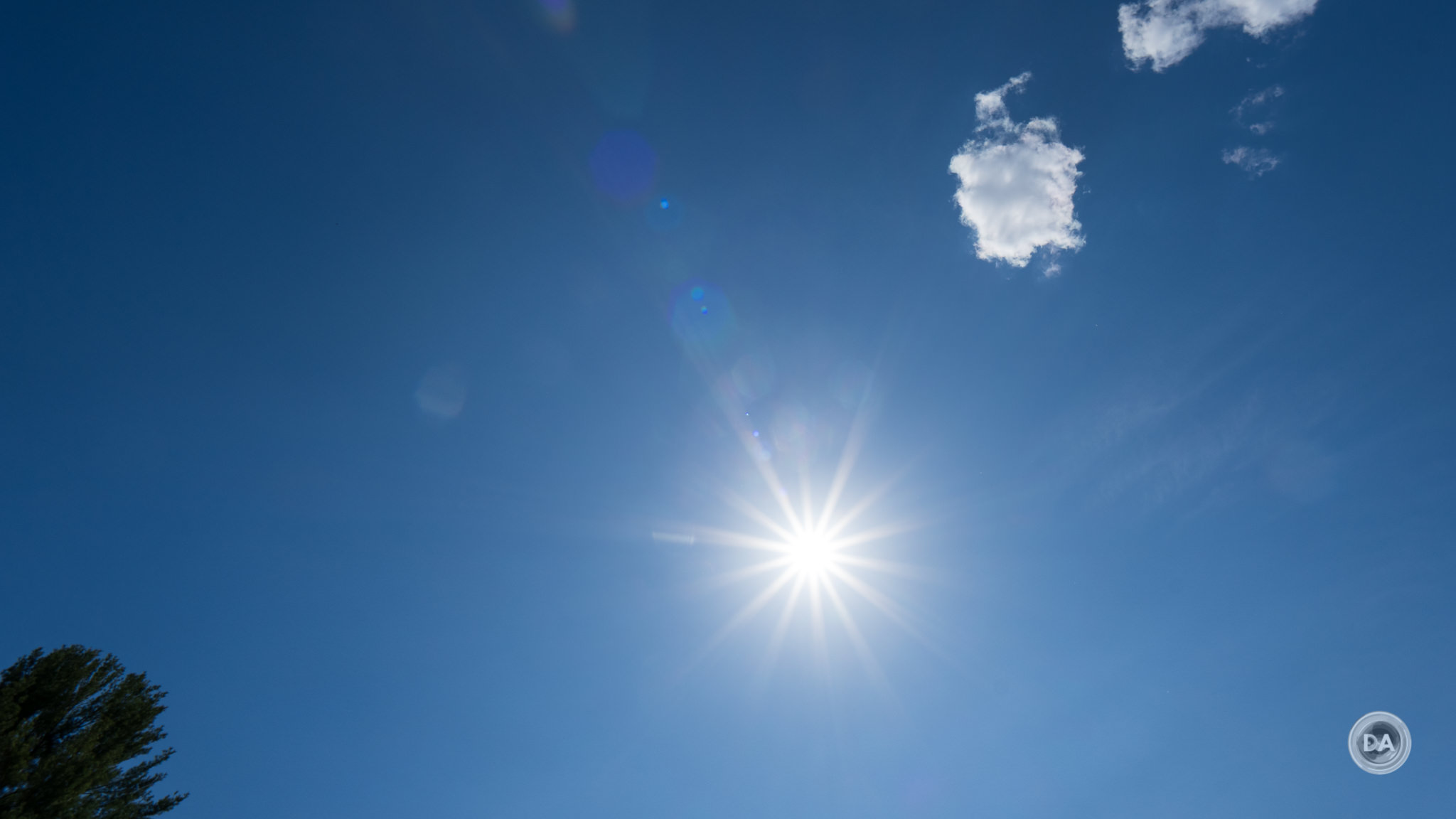
Every bit for the circular shape of the aperture when stopped downwards, that'southward not overly relevant here. There will be few situations where you volition be able to create much of a defocused background with the lens stopped downward, and those mostly when at or about minimum focus altitude. Here's a wait at F2.8, which still looks fairly round in the bokeh highlights.
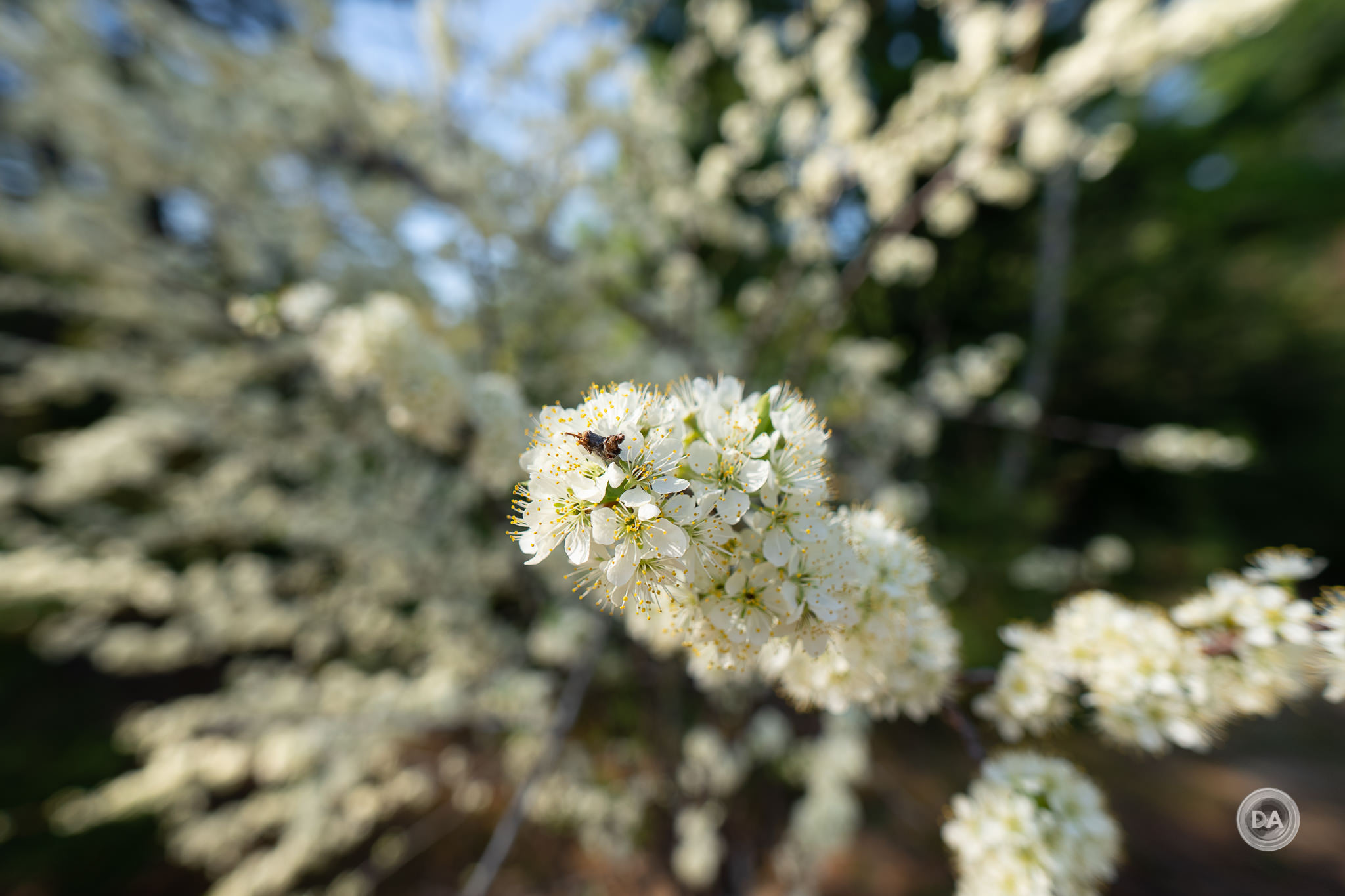
Speaking of that minimum focus distance, it is 19cm (about seven.5″), and the magnification level is a fairly pedestrian 0.10x, though its worth noting that the new AF lens can focus most one centimeter closer and should give a slightly higher magnification figure than the older MF lens. Here'southward what MFD looks like:
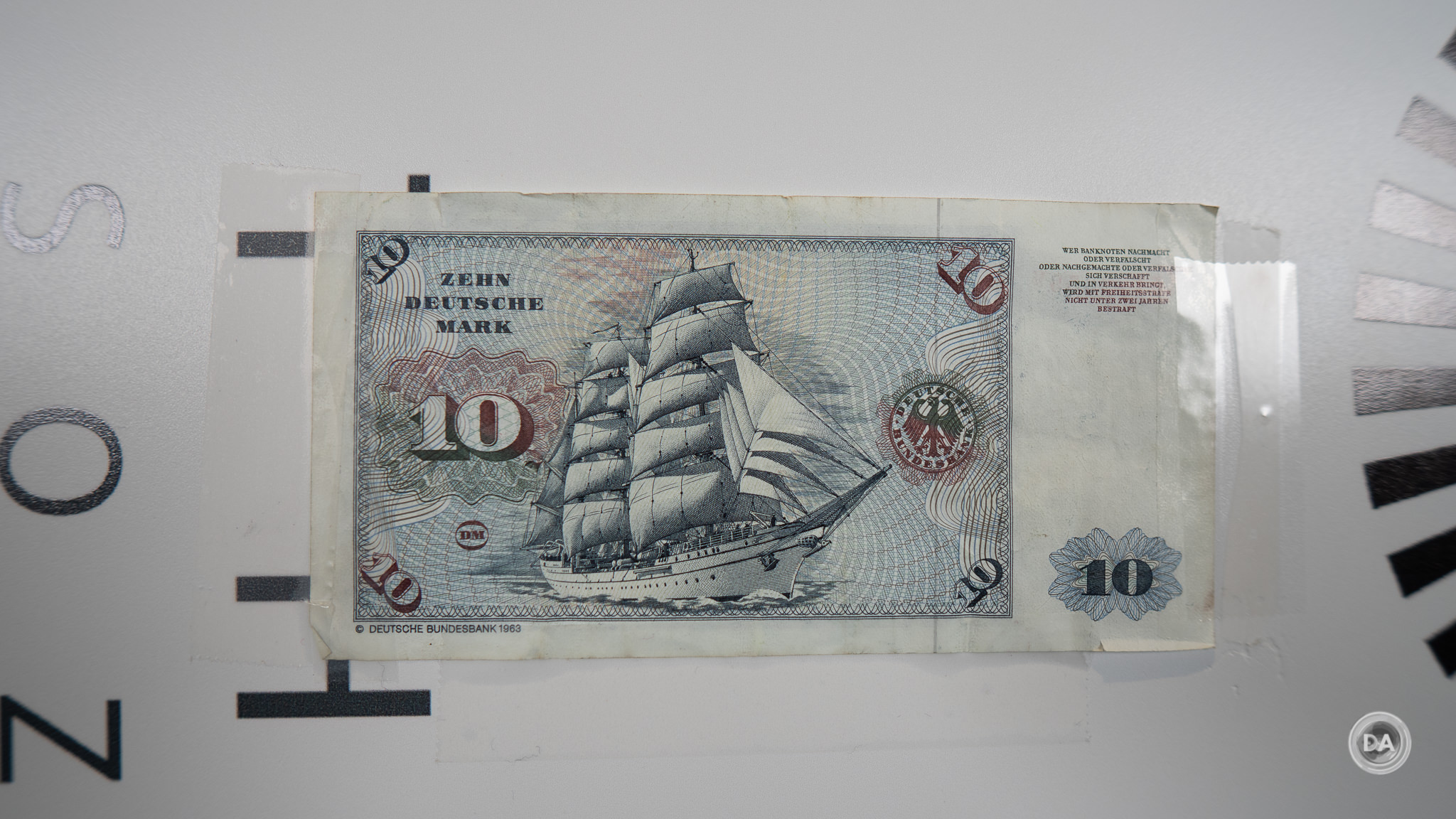
The magnification figure isn't particularly high, plain, only the plane of focus is relatively flat and close upwardly functioning is quite good. That translates to skillful results in real world close up work:
Here'southward another example:
All in all, this is a nicely executed package that combines calorie-free weight and compact size with skilful handling, howbeit without much in terms of features exterior of the weather condition sealing. Samyang's most contempo lenses for full frame have included some additional features like a custom switch and even, about recently, a focus hold button. It is worth noting that neither the Sony 10-18mm nor the Sigma 16mm F1.4 lenses mentioned equally comparisons accept any kind of switches or buttons either. Samyang has really exceeded the Sony lens in having weather sealing. This lens is an splendid value when y'all consider that the Samyang AF12 has weather sealing, a lens hood, and a case at its $399 USD price tag. That price, incidentally, is exactly the same as the manual focus version of the lens that I tested back in 2014, and and then you are getting a lot of additional value for no additional money. Difficult to argue with that!
Samyang AF 12mm F2 Autofocus and Video Performance
I watched Samyang really grow by leaps and bounds over the past 3 years in their perfecting of autofocus. The primeval focus motors were a scrap crude, but that improved when they switched to linear focus motors. They've continued to improve on their focus accurateness and focus confidence as well, and at this point I accept a lot of confidence in their capabilities. The AF12 is equipped with a Linear STM (stepping motor) that provides fast, silent, and authentic autofocus. I had very good focus accuracy during my review, fifty-fifty when shooting more challenging narrow depth-of-field shots, like this:
I as well had fantabulous "stickiness" in tracking human eyes when shooting my video tracking test. Focus smoothly traveled with me as I approached the camera (lens aperture wide open up at F2), then moved rapidly forward and backwards. At that place was no drama or big, sharp focus changes. All broad angle lenses are helped past the fact that depth of field is typically pretty deep due to the nature of the focal length, simply it was obvious that tracking was accurate even when I moved very close to the photographic camera and less was in focus.
Samyang has come a long style in "unlocking" quality autofocus:

My focus pull test produced silent, authentic focus pulls without any sound or drama in focus at all. Focus settled quickly and accurately without whatever pulsing or hunting. No focus racket was apparent…at all. This lens would work nicely for vlogging or working from a gimbal. It'south a bang-up angle of view, very compact and lightweight, and will offering up a lot of flexibility for stylized shots commonly chosen "inception manner" or similar considering the lens is small-scale enough to never hitting annihilation during total 360° rotations.
Here's another shot from a low bending, and once once again autofocus grabbed the correct spot and focused accurately.
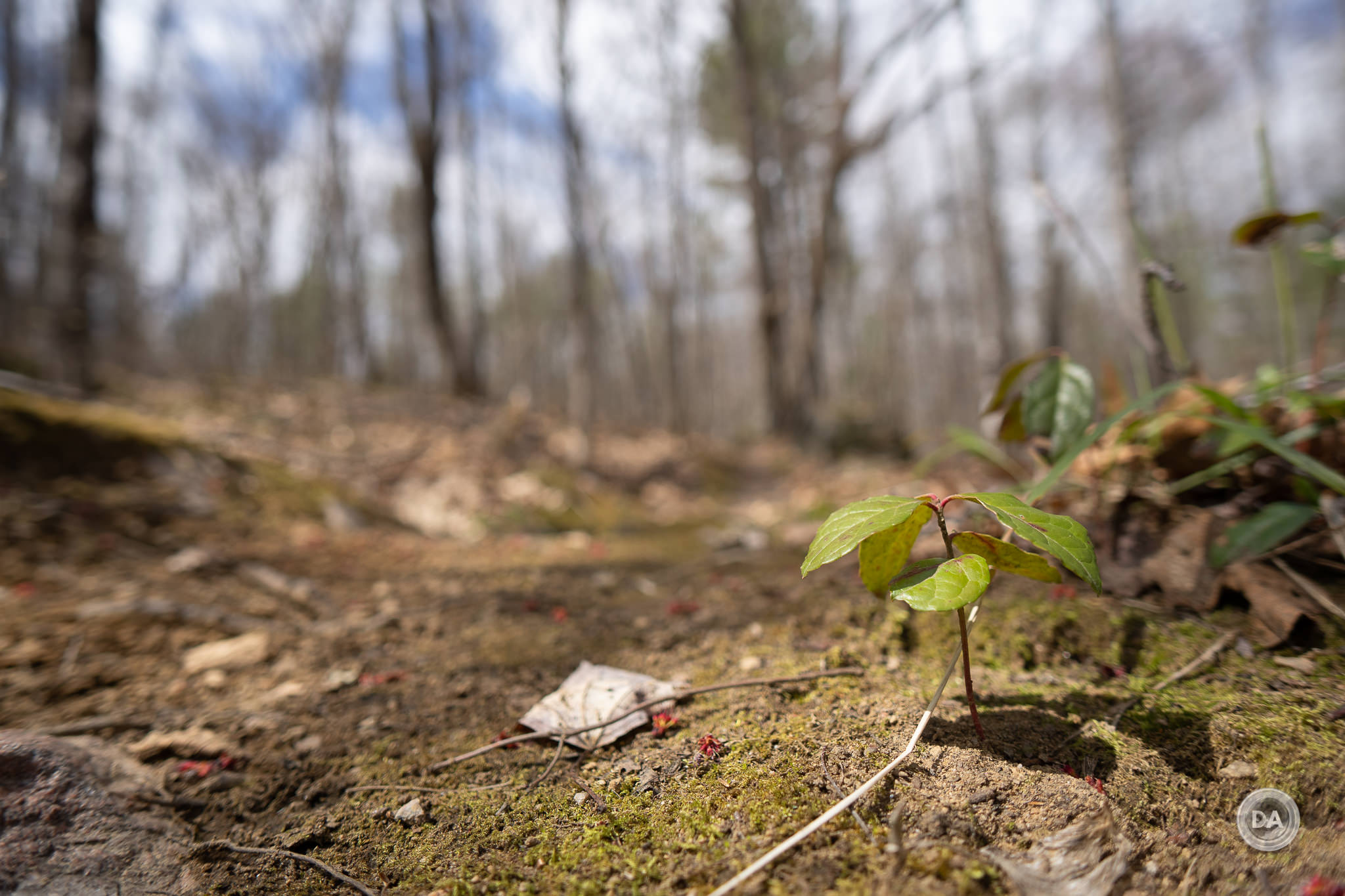
Kudos to Samyang for developing growing maturity in their autofocus pattern and execution!
Samyang AF12 Image Quality
Samyang lenses frequently "punch higher up their weight" optically, and that's certainly truthful here. Don't let the light weight of the lens deceive you; this is a very sharp lens! Nosotros have a fairly loftier stop optical construction here of 12 elements in 10 groups, with 5 of those being special elements, including ane High Aspherical, 1 Aspherical, and iii Actress Low Dispersion elements. If y'all understand MTF charts, you will come across that the lens is very precipitous in the eye but has pregnant driblet-off in the corners.
We'll intermission down how the AF12 operates in real world atmospheric condition along with nautical chart testing. Every bit noted in the intro, I was very impressed with the eyes of original lens in 2014, only standards take changed since then. Wide angle lenses in particular have gotten a lot meliorate. My beginning reaction when I saw that the optics were the aforementioned every bit the older lens, I shrugged, thinking, "it was already a practiced lens". That'due south true to some extent, but I've as well found my expectations are higher these days. At the same fourth dimension, I also recognize that I spend a lot of fourth dimension with expensive full frame lenses, which influences my perceptions, but this lens is however quite good relative to directly competitors on APS-C. It's certainly capable of detailed, punchy images.

So let's jump into the technical side of things. The Samyang has mild amount of barrel distortion that is fortunately very linear in nature and piece of cake to correct for…even manually. I used a +seven on the Lightroom distortion slider to correct information technology. What'due south interesting is that if I tried using the preset for the earlier manual focus lens, I cease up with a slightly overcorrected result, so it is possible that in the tweaking of the eyes for the new lens, Samyang managed to clean things upwards a piddling.

Vignette is moderate (right over two stops), which isn't bad for a wide aperture, wide bending lens. A +60 and moving the midpoint slider to zero did the trick, though we can come across a slight corporeality of color variation in the recovered vignette area.
Longitudinal CA (LoCA) isn't too bad, with a bit of majestic (before) and blue/green fringing (subsequently) the airplane of focus.
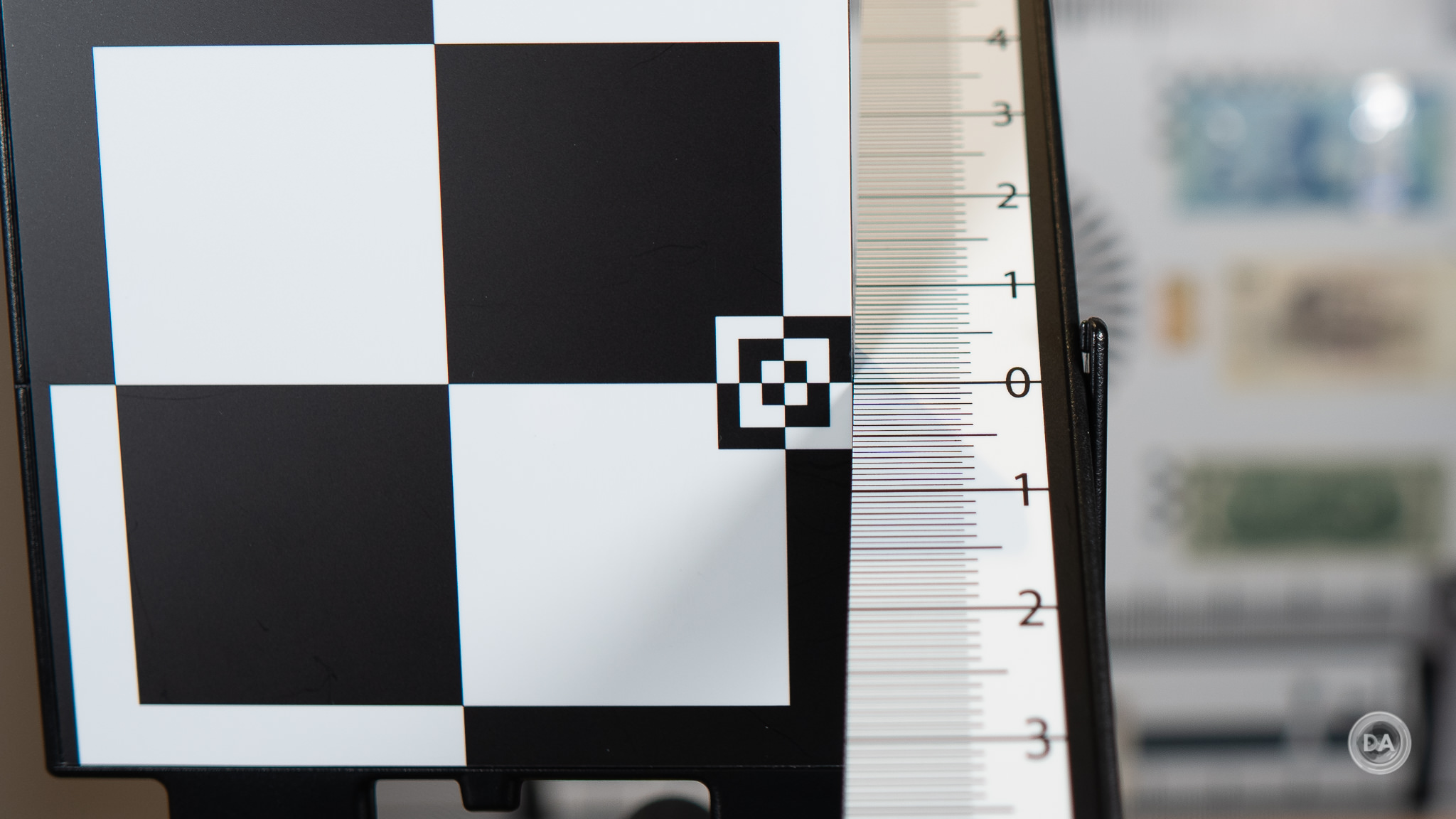
You'll see this a bit in certain high dissimilarity existent world situations similar this one.
About commonly information technology will probably manifest equally a hint of light-green around bokeh highlights.
There is also a fleck of LaCA (Lateral CA) which shows up on the fringes of images on either side of high contrast areas – like the transition from white to blackness on my test chart:

This is another divergence from the original lens that my tests revealed. The original lens really suffered from lateral chromatic aberrations, and that'south much less the instance here. I went through a number of real globe images where I expected to see significant fringing, merely actually didn't find it. It was there every at present and and then, but non similar what I saw previously.
So, on the basic optical flaw front, the AF12 is doing quite well for a wide angle lens. Distortion, vignette, and chromatic aberrations are relatively under command, and certainly non pronounced plenty to crusade any real issues.
And so how about resolution?
Here'due south the whole exam chart. Tests are done in the APS-C mode on the 50MP Alpha ane (21 MP of resolution in APS-C mode) on a tripod with a two 2nd delay.
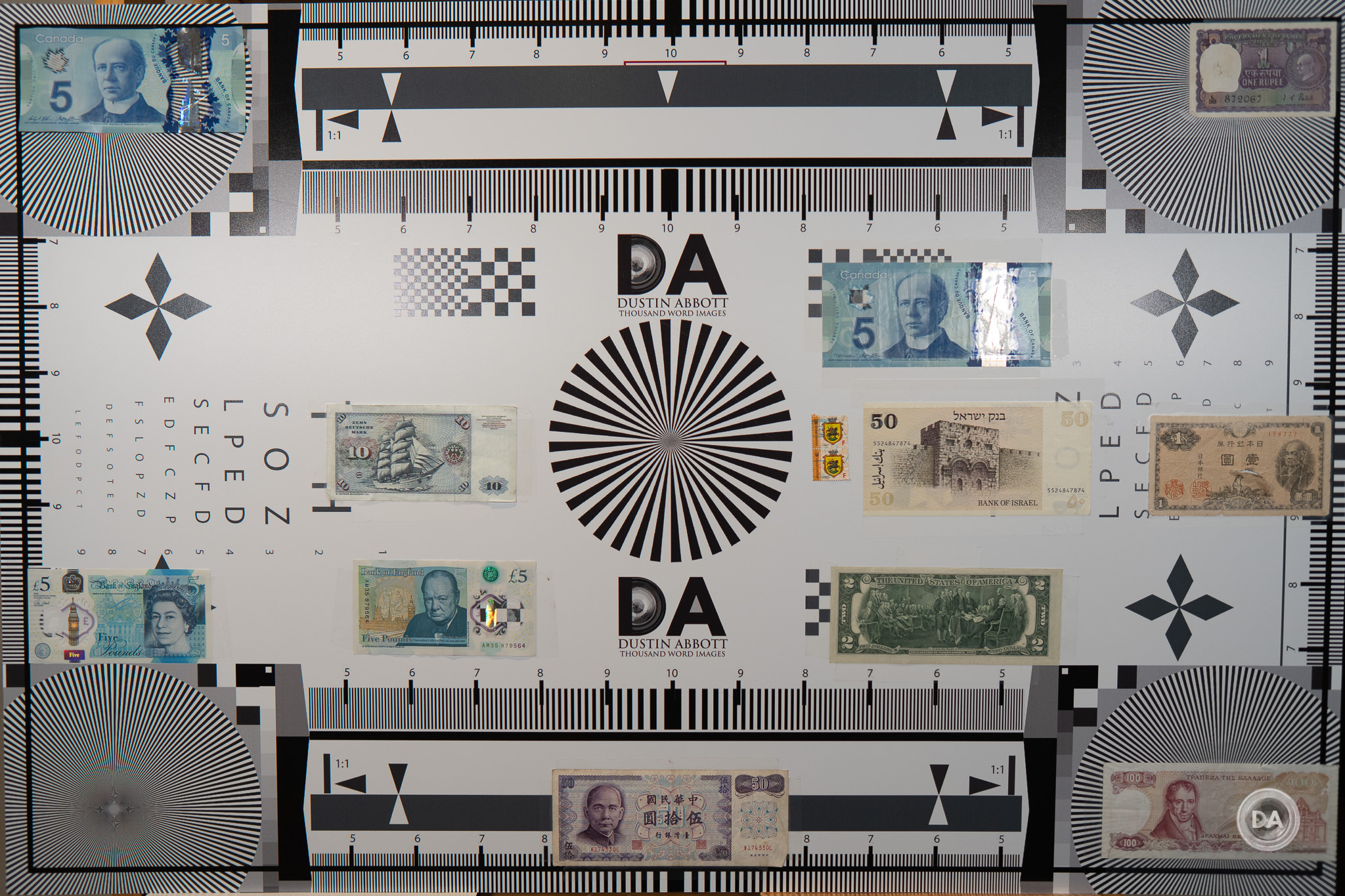
Hither are the crops from the center, mid-frame, and corner at F2:
Resolution and dissimilarity are fairly skilful, only acuity isn't sky-high. Textures aren't mushy or blurred, but neither are they pin-sharp. Yous tin see some significant drop-off in the extreme corners.
Existent world images tend to be a little more than forgiving, as they aren't viewed at such loftier magnification (I do my test chart at 200%), and also corner sharpness is simply important in some (not all) images. Image quality fairly close upward at F2 was impressive here:
I did notation, withal, that the corners were never quite pin-precipitous, even when I stopped down a bit to F5.6.
In 2014, this was no at all unusual, but these days there are certainly lenses that are extremely sharp even in the extreme corners. For many mural images, however, having expert sharpness all across the frame (merely not necessarily into the corners) is going to matter more. The AF12 fairs better if that is the criteria, delivering nice image sharpness here:
I felt like almost of my images were quite abrupt overall. Textures on the side of this barn at F4 looked nice and crisp:
Returning to chart examination, I found that sharpness and contrast improved mildly at F2.viii, with the improvement nearly noticeable in the corners. Stopping on down to F4 made for further improvement, with the greatest improvement showing from F4 to F5.6, where the lens seems to show peak sharpness in most of the frame. Stopping on down to F8 didn't actually improve things further. Notwithstanding, you lot can run into how much progress is made in the corners by comparison F2 and F8. Dissimilarity, in detail, has really picked up.
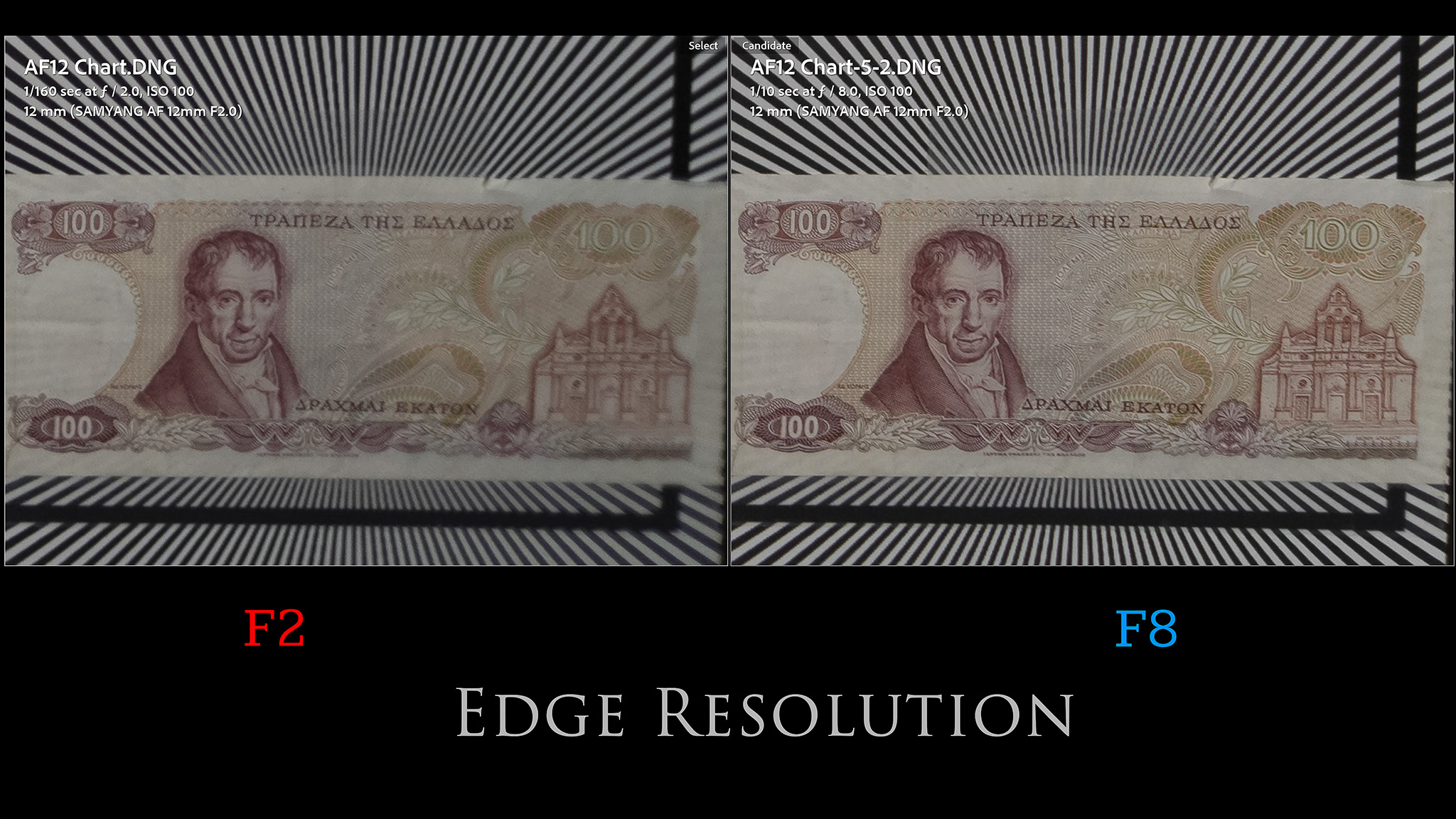
Shoot at F5.half dozen and F8 to get overnice sharpness across most all of the frame.

Commonly a broad angle lens is not where you expect for bokeh, and that'southward generally truthful here. The discontinuity is a fiddling wider than many wide angle lenses, and so y'all can get reasonably close and mistiness out backgrounds a chip. The quality of the bokeh varies according to the complexity of the groundwork (wide bending lenses well-nigh never completely blur everything out) and the ratio of the distance to the subject and and so to the groundwork. In some situations, I found the bokeh looked quite prissy:
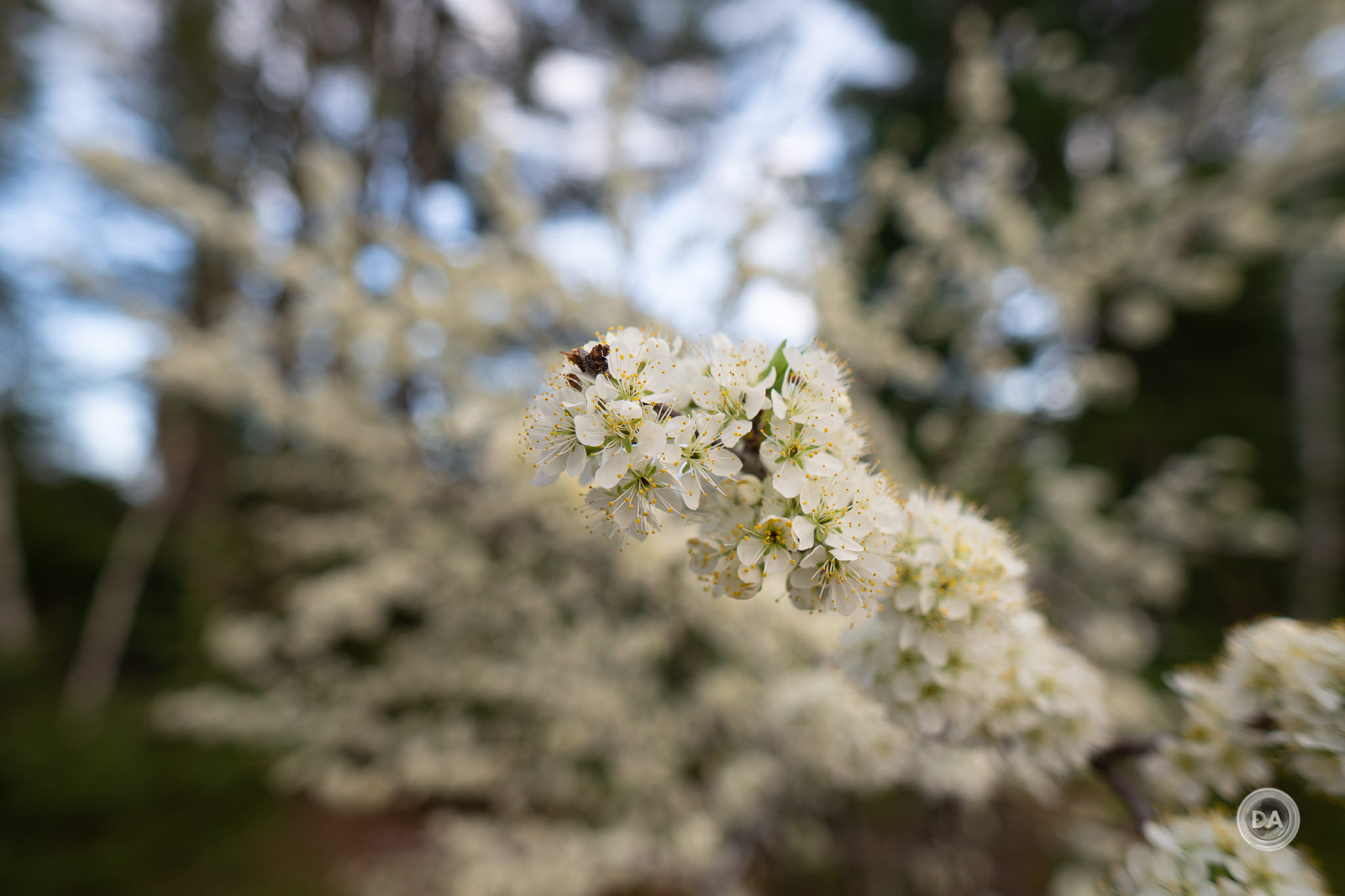
The transition zone can get a little "jittery" though. Y'all can see the midpoint of the image on the moss/bark of the tree is "nervous", but the distant groundwork looks nice.

You've seen a number of "bokeh images" in this review already, simply here'southward a few more than to help yous determine whether or non you like the rendering from the lens.
I would phone call this at most a 3rd concern in a wide angle lens, merely y'all can have creative shots with a wide angle lens that show a foreground object close to the camera in focus while not quite blurring out the whole scene. It is hinted at enough to give the epitome more context than a longer focal length that tends to blur everything.
Flare resistance was generally quite good, with some small-scale ghosting artifacts that were never too strong or noticeable. Contrast remains skilful, and, equally noted, the sunburst outcome is noticeably improved over the previous lens when stopped down.
Blackout performance was likewise quite good. This has always been a relative strength for the lens, equally star points stay quite crisp and precise even towards the edge of the frame. The lens has an advantage in discontinuity relative to many broad angle lenses for APS-C, so existence able to shoot at F2 allows y'all to keep ISO down (less noise) forth with having shorter shutter speeds (less chance of star move).
This is a solid choice for astrophotography.
Truth be told, there are few lenses like this on Sony APS-C. The combination of meliorate-than-average build, autofocus, wider maximum aperture, and fairly stiff optical operation brand this lens quite unique. I've enjoyed the manual focus version of this lens in the by, and I was reminded why during this review. Bank check out the image gallery here if you would like to see more images.
Conclusion:
Sony APS-C shooters are only rarely blessed with quality new lenses, but so far in that location have been at least a couple of really positive new additions. The Tamron 17-70mm F2.eight was a actually nice professional course zoom option (my review here), and this Samyang AF 12mm F2 provides a nice wide bending counterpart. Both lenses have weather sealing, quality autofocus, and strong optical operation. The weather sealing, in particular, is not something often seen on older APS-C lenses, more often than not considering many APS-C mirrorless cameras have not had weather sealing in the cameras themselves. Fujifilm has been the exception to that rule and accept the idea of pro-grade APS-C cameras more seriously, simply I suspect nosotros'll see more of that from Sony in the time to come.

This is a great selection for those wanting a wider angle when traveling, working on a gimbal, or just to compliment a zoom lens. Information technology has a not bad bending of view that is right in the sweet spot for landscape, city, or architecture. It has low enough distortion that the latter is a possibility, which further adds to its travel credentials.

It's a nicely made lens that has keen autofocus and a strong optical operation (minus the extreme corners). Images have a lot of pop to them, and I doubtable you lot'll have fun shooting with this one. Perhaps most importantly, though, is that Samyang has once again given united states a great lens at a keen price. $399 USD isn't a pittance, obviously, merely you would be hard-pressed to observe a better value in the wide angle department if you want autofocus.
Here's hoping that this is simply the get-go of a new series of autofocusing lenses targeted at Sony's APS-C mirrorless cameras. I know many, many photographers who would welcome just that!

Pros:
- An splendid update of a well loved lens
- Incredibly lightweight
- Weather sealed
- New pattern is clean and elegant
- Autofocus is fast, placidity, and accurate
- Quite abrupt in the eye and midframe wide open
- Blackout well controlled
- Improved aberration control
- Low baloney
- Skillful flare resistance
- Adept blackout performance
- Includes hood and case
- Awesome price to performance ratio
Cons:
- Corners a piffling soft
- Samyang lenses don't seem to get total in-photographic camera correction support
- Hood doesn't reverse for storage
Gear Used:
Purchase the Samyang AF 12mm F2 @ B&H Photo | Amazon | Amazon Canada | Amazon UK | Amazon Frg
Purchase the Tamron 17-70mm F2.8 VC RXD @ B&H Photo | Amazon | Camera Canada | Amazon Canada | Amazon UK | Amazon Germany | Ebay
Purchase the Samyang AF 24mm F1.8 @ B&H Photo | Amazon | Amazon Canada | Amazon UK | Amazon Germany | Ebay
Purchase the Sony a6400 @ B&H Photo | Amazon | Amazon Canada | Amazon Great britain | Amazon Deutschland | Ebay
Sony a6500: B&H Photo | Amazon | Amazon.ca | Amazon Britain | Ebay
Buy the Sony a6600 @B&H Photo | Amazon | Amazon Canada | Amazon Great britain | Amazon Germany | Ebay
Buy the Sony Alpha i @ Camera Canada | B&H Photograph | Amazon | Amazon Canada | Amazon UK | Amazon Germany | Ebay
Buy DA Merchandise https://scrap.ly/TWIMerch
Buy a Sony a9M2 @ B&H Photo | Amazon | Camera Canada | Amazon Canada | Amazon Great britain | Amazon Deutschland | Ebay
Sony a9 Photographic camera: B&H Photo | Amazon | Camera Canada | Amazon Canada | Amazon UK | Amazon Germany | Ebay
Sony a7RIV Camera: B&H Photo | Amazon | Photographic camera Canada | Amazon Canada | Amazon Uk | Amazon Frg | Ebay
Peak Design Ternion Strap: Peak Design Store | B&H Photo | Amazon | Amazon Canada | Amazon UK
BenQ SW271 4K Photo Editing Monitor – B&H Photo | Amazon | Amazon.ca | Amazon UK
Adobe Photoshop Creative Cloud 1-Year Subscription
Exposure Software X6 (Use Code "dustinabbott" to get 10% anything and everything)
Visit Dustin'due south Amazon Storefront and come across his favorite gear

Purchasing your gear through B&H and these links helps fund this website and keeps the articles coming. You can also make a donation here if you would like. Visit my Amazon page for some of my gear of selection! Thank you for your support.

Not bad News! I can at present offer a 5% discount on all purchases at Amplis Foto, Canada'southward Leading Photographic Supplier. Please enter discount code: AMPLIS52018DA in your cart. It is proficient for everything in your cart, and is stackable with other coupons, too! It will accept 5% off your unabridged gild! Gain go towards keeping this site going and providing you with new reviews!
Check me out on: My Patreon | Sign Upward for My Newsletter | Instagram | Facebook | Twitter | Flickr | 500px | Google+ |
Purchase the Samyang AF 12mm F2 @ B&H Photo https://bhpho.to/3wj0K78 | Amazon https://amzn.to/3v3xQaH | Amazon Canada https://amzn.to/3bBu40E | Amazon Britain https://amzn.to/2S9dNZG | Amazon https://amzn.to/3eZSDX4
Keywords: Samyang AF 12mm F2, Samyang, AF, 12mm F2, FE, Samyang 12mm F2 Review, Samyang AF 12mm Review, Samyang AF 12mm F2 Review, Sony Alpha i, Sony A1, Sony a6400, Sony a6600, Review, Hands On, Dustin Abbott, Real Earth, Comparison, Sharpness, Autofocus, Image Quality, Sample Images, Video, Photography, Astrophotography
DISCLAIMER: This article and description contains chapter links, which means that if you click on one of the product links, I'll receive a small commission. As an Amazon Associate I earn from qualifying purchases.
Source: https://dustinabbott.net/2021/05/samyang-af-12mm-f2-review/
0 Response to "Samyang 12mm F20 for Sony E Mount - Reviews"
Publicar un comentario